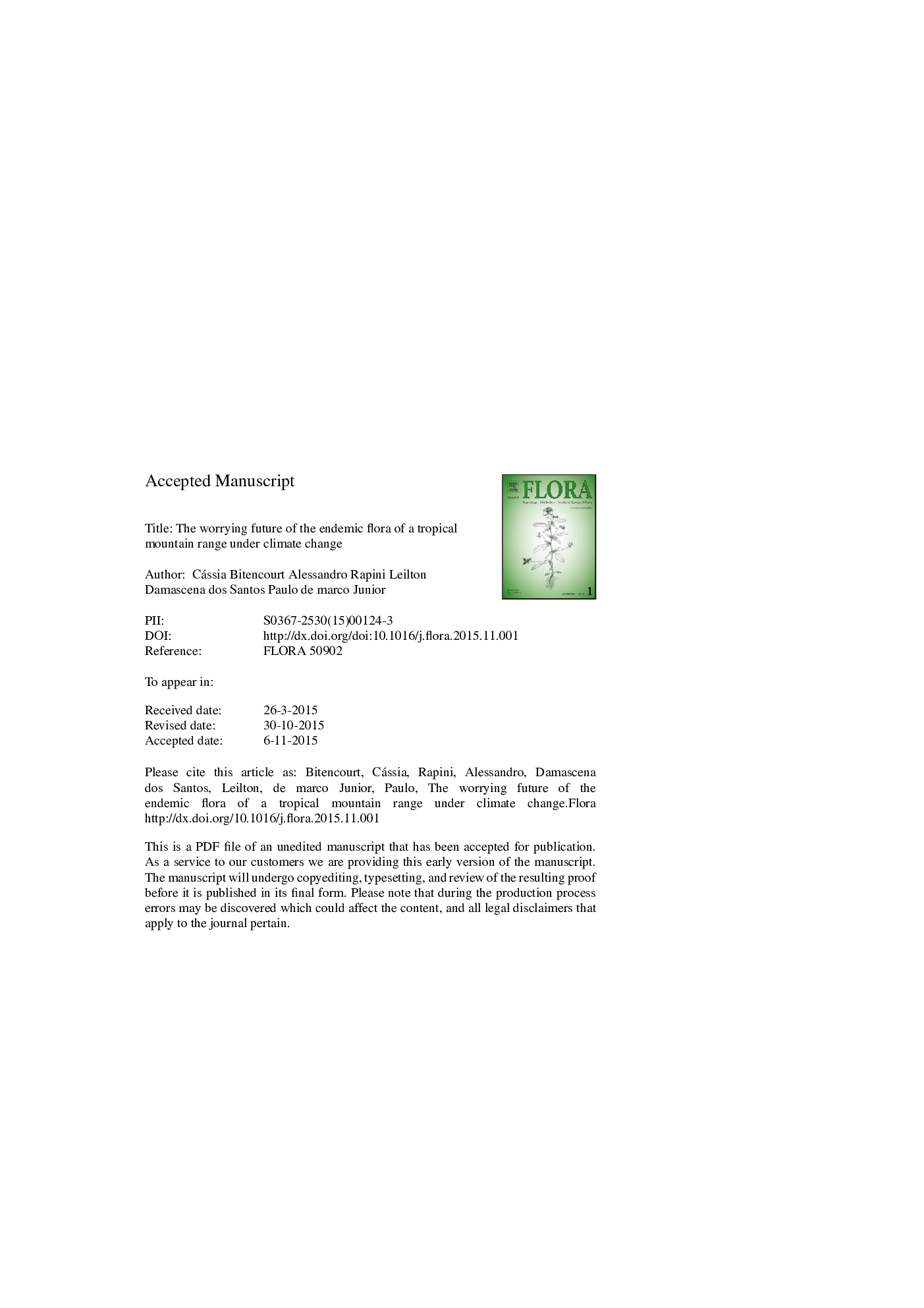| Article ID | Journal | Published Year | Pages | File Type |
|---|---|---|---|---|
| 8470295 | Flora - Morphology, Distribution, Functional Ecology of Plants | 2016 | 36 Pages |
Abstract
Current global warming causes range changes and affects the distribution of species. Microendemics are the first affected and the most threatened by climate change. Here, we model the potential range of the rupestrian grassland biome (campos rupestres) in a neotropical, endemic-rich mountain range to project changes in its distribution and biodiversity. Our approach is based on the distribution of 42 asclepiad species endemic to the Espinhaço Range, southeastern Brazil. Models were produced for the present and for 2020, 2050 and 2080, under two different scenarios of CO2 emission, by implementing a maximum-entropy machine-learning algorithm (maxent). The area suitable for campos rupestres was projected to be smaller in the future, and in 2080 would represent approximately half of the current area, most of which would be restricted to the southern portion of the Espinhaço Range. According to our models, by the end of the century, the area suitable for campos rupestres in the northern portion of the Espinhaço Range (Chapada Diamantina) would be reduced to only 1.7%, restricted to two small fragments that are not yet protected by the current reserves. This habitat loss corresponds to an estimated 56% richness loss and the likely extinction of 328 (97%) microendemic species of angiosperms. Our results highlight the importance of approaches at local and regional scales for conservation planning in a world undergoing anthropogenic climate change.
Related Topics
Life Sciences
Agricultural and Biological Sciences
Ecology, Evolution, Behavior and Systematics
Authors
Cássia Bitencourt, Alessandro Rapini, Leilton Santos Damascena, Paulo De Marco Junior,
